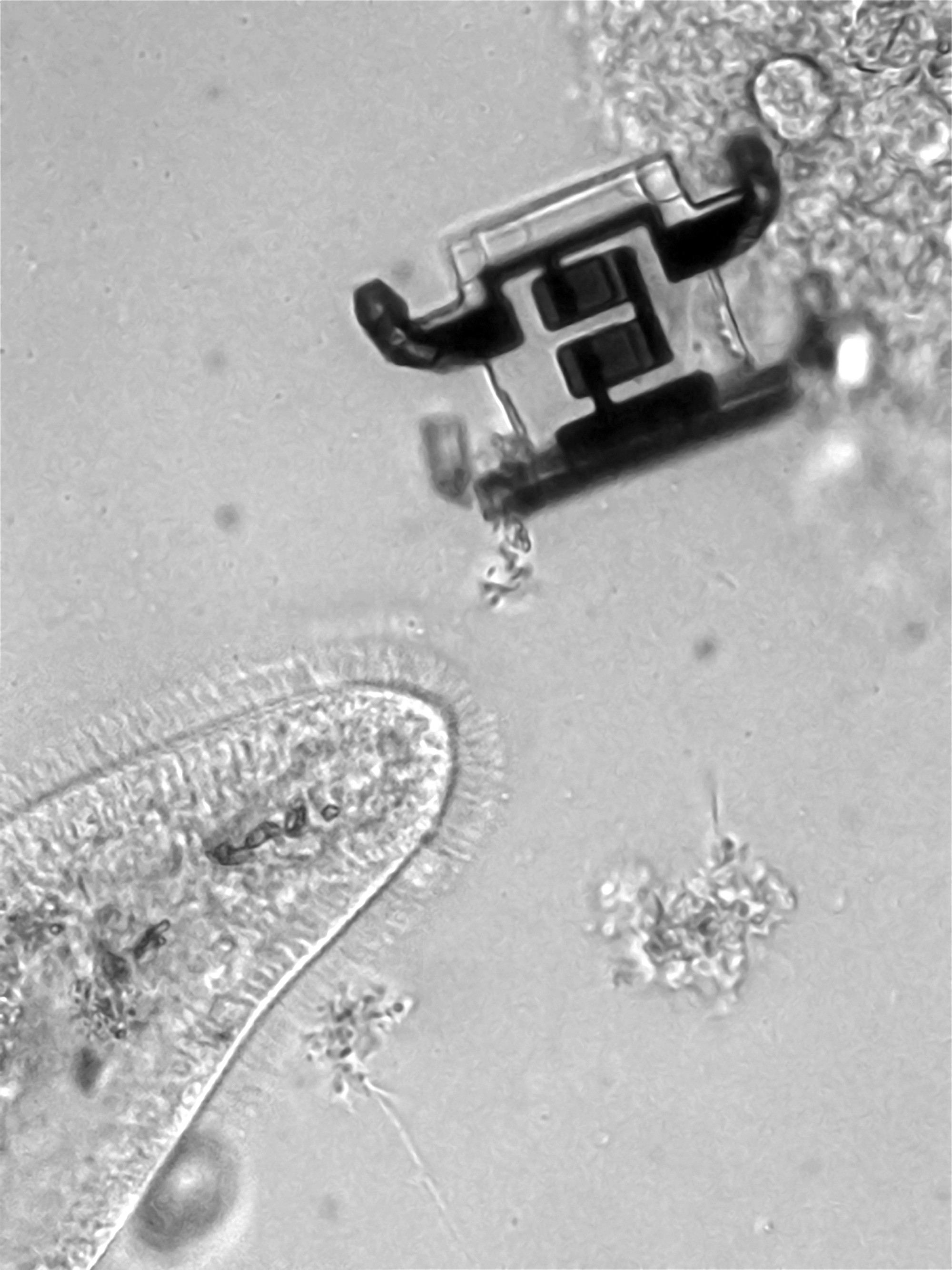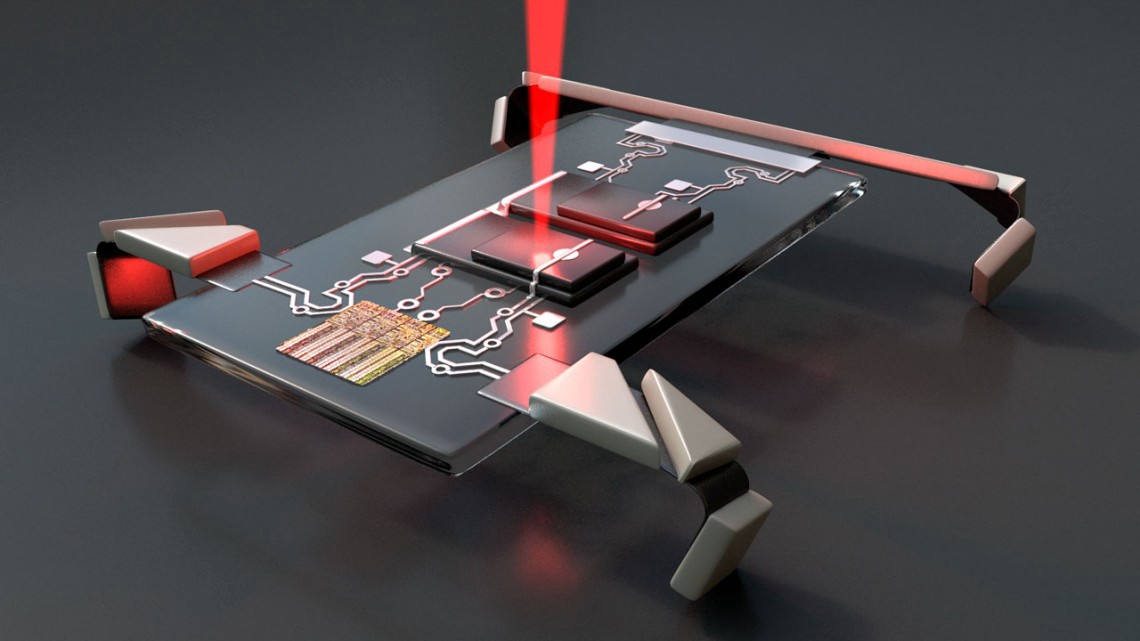
Advances in robotics are often looked at through the lens of our own biology. Is a new humanoid robot’s gripper gentle enough to safely give a handshake? Can it keep its balance as well as a toddler?
Researchers from Penn Engineering and Cornell are looking through this lens at an even more fundamental level: creating robotic systems that are on the scale of biological cells.
They have created the first microscopic robots that are made with semiconductor processing and can be controlled — and made to walk — with standard electronic signals. Roughly the size of a paramecium, they provide a template for building even more complex versions that can be mass produced and may someday travel through the human body.

The three have now led a study, published in the journal Nature, that outlines how these microscopic robots can be assembled and controlled.
“I remember looking into a microscope as a kid and being blown away by all these amazing tiny creatures,” says Miskin. “Biology works through microscopic machines. Even you are essentially a giant machine made out of tiny robots called cells.”
“Nature shows there’s no reason we can’t build something incredibly small and incredibly complex,” he says. “The question is how can we do it? How can humans build systems that duplicate what biological cells are doing, even in some small way?”

The researchers’ new robots are too small to be seen by eye: about 5 microns thick, 40 microns wide and ranging from 40 to 70 microns in length. Each consists of a simple circuit made from silicon photovoltaics — essentially the torso and brain — and four electrochemical actuators that function as legs.
“In the context of the robot’s brains, there’s a sense in which we’re just taking existing semiconductor technology and making it small and releasable, but the legs did not exist before,” says McEuen. “There were not small, electrically activatable actuators that you could use. So we had to invent those and then combine them with the electronics.”
Using lithography techniques similar to those employed in making computer chips, the robots’ brains and torso are etched onto silicon; roughly a million of them can fit onto a standard four-inch silicon wafer. Atomic layer deposition then adds the legs, which consist of strips of platinum, only a few dozen atoms thick. Applying a voltage causes the platinum to curl up, so rigid panels are also added on top of those strips, essentially creating joints that determine how the strips will bend when actuated.
The researchers control the robots by flashing laser pulses at different photovoltaics, each of which activates a separate set of legs. By toggling the laser back and forth, the robot walks.

The robots can currently be coaxed into skittering at a top speed of 30 microns per second, still quite slow, but the researchers believe their gaits can be optimized to emulate the more efficient motion of biological microorganisms.
“While these robots are primitive in their function — they’re not very fast, they don’t have a lot of computational capability — every single one of the innovations that we made in creating them blows open the door to making these things smart, fast and mass-producible,” Cohen says. “This is really just the first shot across the bow that, hey, we can do electronic integration on a tiny robot.”
As the researchers imbue their microscopic robots with more abilities, they envision them having applications in biological contexts, such sitting on leaves to fight agricultural pests, or circulating in the bloodstream to sense infections or cancerous cells.
“Computers changed the world by getting better, cheaper and smaller,” Miskin says. “It’s going to be really exciting to see what happens when we can start to do the same thing with robotics.”
The research was supported by the Army Research Office; the Air Force Office of Scientific Research; the Cornell Center for Materials Research, which is supported by the National Science Foundation’s Materials Research Science and Engineering Center program; and the Kavli Institute at Cornell for Nanoscale Science. The work was performed at the Cornell NanoScale Science and Technology Facility.
